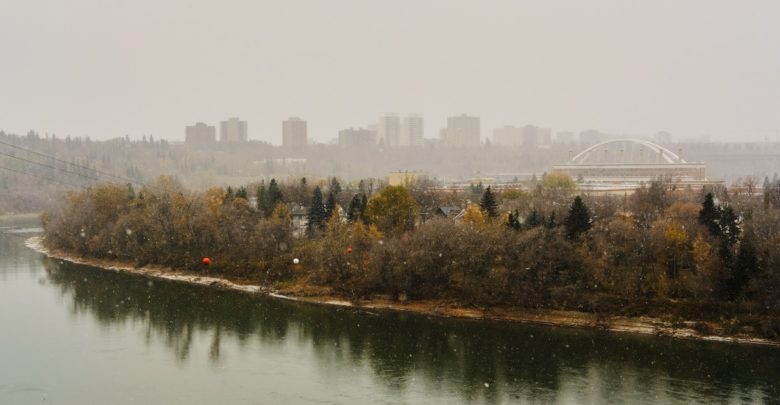Ărramăt Project highlights interconnections between Indigenous well-being and biodiversity
The project brings together over 150 Indigenous global organizations and governments with researchers at Canadian and international post-secondary institutions, including academics from the University of Alberta.
 Connor Lengkeek
Connor LengkeekThe Ărramăt Project is working to build the capacity of Indigenous organizations to document, share, and use their knowledge about the interconnections between biodiversity conservation and health and well-being.
The project brings together over 150 Indigenous global organizations and governments with researchers at Canadian and international post-secondary institutions, including 12 academics from the University of Alberta. The Ărramăt Project is primarily working to highlight issues of biodiversity loss and the implications these issues have on health and well-being.
Brenda Parlee, a non-Indigenous scholar and professor in the Resource Economics and Environmental Sociology (REES) program, is the nominated principal investigator of The Ărramăt Project.
“A key dimension we’re trying to address [is] that there are significant inequities in terms of the kinds of knowledge that is considered valid in university research projects,” Parlee said. “[This can be done through] focusing on the tremendous expertise and knowledge that Indigenous communities, elders, leaders, and youth have to share, and the passion and the perseverance to address some of these very difficult environmental issues that are also spiritually and emotionally and culturally damaging.”
“The project is about those emotional, spiritual, and cultural connections to the environment.”
Parlee described this project as having a “different approach” to engaging in work surrounding biodiversity.
“Sometimes when we’re talking about biodiversity, it’s just this technical thing of how many species are there, let’s count them, the end,” Parlee said. “Our project has a much different approach to in engaging in [biodiversity] work and recognizing that the environment, Mother Earth, the trees, the wildlife, and the species that we are concerned are being lost have agency.”
“They need to be respected in their own right, not just as resources that we manage but they have a have a life and a spirit that needs to be acknowledged and protected.”
Sharlene Alook, nehiyaw iskwew and graduate student with the Resource Economics and Environmental Sociology (REES) program, is working with the Ărramăt Project on researching place names and mapping for Bigstone Cree Nation.
Alook described the program as a way to bring back values of respecting the Earth and nature.
“For me, being born and raised in a small community Kisipikamahk… I had so many blessings growing up with the lake being so healthy, being able to swim and catch fish from it and just do the activities needed to sustain ourselves…. and the Earth is just not being respected like before,” Alook said. “Those values need to be brought back. That respect for Mother Earth needs to be brought back.”
“This influences me to work harder, to raise my voice, to be heard. My ancestors fought and suffered for me to be here. Their knowledge needs to be shared, and academia is a path for that.”
Hannah Cunningham, a research assistant with the project, emphasized the importance of interdisciplinary work surrounding issues of biodiversity.
“It’s not just about … some of the hard science around wildlife disease, for example, there’s also a huge social impact and so many different sort of threads of work going on within one disease,” Cunningham said. “I was inspired to help work on this project because I saw all the fantastic work that can be done when Indigenous communities can get the funding and support to create these kinds of programs and do this kind of work.”
“I’m really excited to connect with those potential students and make sure they’re feeling supported and make sure that they are finding a great place to work and learn within this larger project.”
Abby D’Souza, the Indigenous knowledge communications manager for The Ărramăt Project, described all partners of the project as very “invested” in the work being done.
“I’ve never been in a project where basically everybody is this engaged,” D’Souza said. “Out of 150 people, everybody is super, super invested. They’re super engaged, they’re all willing to work with us on what we need to do…. It is a really amazing experience to be around such collaborative people, and it is really meaningful.”
“I just really anticipate that this level of eagerness will continue going forward with the project, which is what makes it so special.”
When considering the impact of The Ărramăt Project in the future, Alook described it as an avenue to bring healing to Indigenous communities.
“This also is an opportunity to bring on healing to our communities,” she said. “Especially with the 215 children that were first found in Kamloops, in the unidentified graves, I think that brought into perspective that a lot more activities of socializing, and reconnecting with ourselves and the environment, are needed to heal.”
“I feel that this project will create that ripple effect that will enhance more ceremonies, more language, more livelihood, more appreciation to what the Creator has given to the people.”




